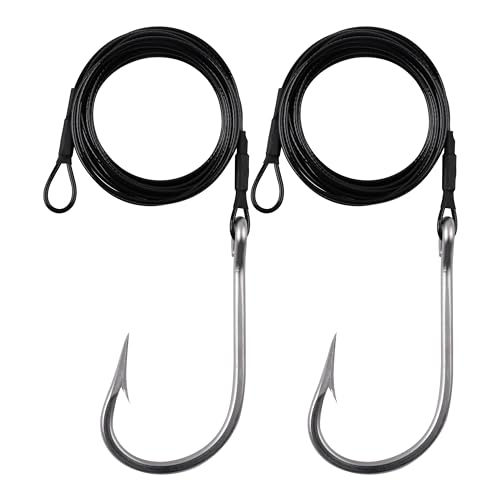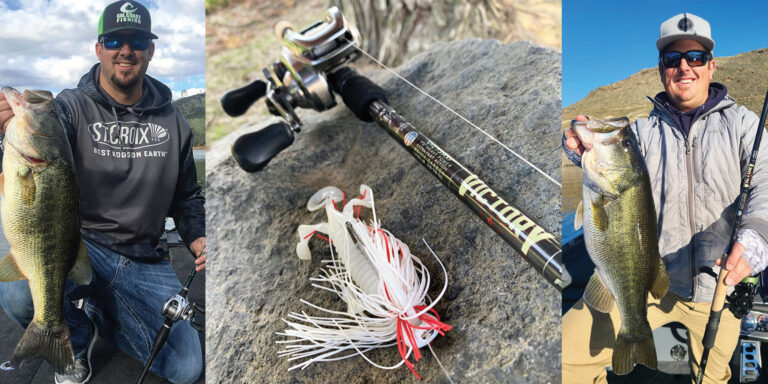To find sandbars for surf fishing, check for areas where waves break consistently. These sandbars can often be found near the shore or at the mouths of rivers and inlets.
Surf fishing enthusiasts are always on the lookout for the best spots to cast their lines into the ocean. One essential element to consider is the presence of sandbars, as they play a significant role in attracting fish. Sandbars are underwater ridges or formations created by the movement and deposition of sand along the shoreline.
They serve as natural barriers that determine the breaking point of waves as they approach the shore. By understanding how to identify and locate sandbars, surf fishermen can increase their chances of a successful catch. We will explore some effective methods for finding sandbars suitable for surf fishing.

Credit: www.pontevedrafocus.com
Why Sandbars Are Crucial For Successful Surf Fishing
Sandbars play a crucial role in surf fishing, providing an ideal environment for anglers to catch fish. These underwater formations have a significant impact on the fishing conditions, baitfish attraction, and wave breaks. In this section, we will explore the importance of sandbars in creating ideal fishing conditions, how they attract baitfish and other marine species, and their relationship with wave breaks.
Importance Of Sandbars In Creating Ideal Fishing Conditions
- Sandbars act as natural structures that create pockets of calm water between the shore and the waves, allowing fish to congregate.
- They provide a buffer zone where the waves break, reducing their intensity and creating a more predictable fishing environment.
- The elevation changes in sandbars create sand troughs, which become channels for fish to navigate and feed.
- These submerged sandbars influence the flow of water, creating eddies that trap smaller aquatic creatures, making it easier for larger game fish to locate and capture their prey.
How Sandbars Attract Baitfish And Other Marine Species
- Sandbars act as a haven for baitfish, shellfish, and other small marine creatures, providing food and protection.
- The gentle slopes of sandbars provide an ideal habitat for crustaceans, worms, and other invertebrates that baitfish feed on.
- The presence of baitfish on sandbars attracts larger predatory fish, creating a food chain that makes them a prime hotspot for surf fishing.
The Relationship Between Sandbars And Wave Breaks
- Sandbars play a crucial role in shaping wave breaks. As waves approach the shoreline, they interact with the sandbars, causing them to break in a more controlled and predictable manner.
- The presence of sandbars helps to dissipate wave energy, reducing the force and intensity of waves hitting the shore.
- The resulting wave breaks create troughs and rips, where predatory fish gather to feed on smaller fish being swept along by the currents.
- Anglers can strategically position themselves near sandbars to take advantage of the wave breaks and increase their chances of hooking a catch.
Sandbars are vital for successful surf fishing. They create an optimal fishing environment, attract baitfish and other marine species, and influence wave breaks. Understanding the role of sandbars in surf fishing can greatly enhance an angler’s chances of a successful and productive fishing trip.
So next time you hit the surf, be sure to keep an eye out for those sandy formations that hold the key to a great fishing experience.
Identifying Sandbars In Different Beach Environments
If you’re an avid angler looking to catch some fish while enjoying the surf, then finding sandbars is crucial. Sandbars not only create perfect spots for surf fishing but also attract a variety of fish species. But how exactly do you identify sandbars in different beach environments?
In this section, we’ll cover three effective methods that will help you locate sandbars with ease.
Key Visual Indicators Of Sandbars From Shore
Beachgoers and experienced surf fishermen know that understanding the visual cues can lead you straight to the sandbars. Here are some key visual indicators to look out for:
- Breaking waves: Sandbars often cause waves to break in a specific pattern. Keep an eye out for areas where waves seem to form a line or break further out than the surrounding water.
- Ripples and color changes: Look for patches of water that appear darker or lighter than the surrounding areas. These color changes usually indicate variations in water depth, a telltale sign of sandbars.
- Foam lines: Sandbars often create foam lines, where waves break and create a visible line of foam parallel to the shore. These lines are usually formed due to the wave energy being disrupted by the sandbar’s presence.
Using Topographic Maps And Satellite Imagery To Locate Sandbars
In today’s digital age, readily available resources like topographic maps and satellite imagery can be incredibly useful tools for locating sandbars. Here’s how you can leverage these resources:
- Topographic maps: Topographic maps provide valuable information about the underwater contours and depths of the seabed. Look for sections where the depth changes abruptly or where there are shallow areas adjacent to deeper water. These areas are likely to indicate the presence of sandbars.
- Satellite imagery: Utilize online mapping services that offer satellite imagery. Look for areas where the water seems shallower compared to other parts of the beach. You can also spot sandbars by looking for areas where the water changes color, indicating differences in depth.
Consulting With Local Fishers And Surfers For Sandbar Knowledge
One of the best ways to gain insights into sandbars in a specific beach environment is to tap into the wisdom of local fishers and surfers. Here’s how you can make the most of their knowledge:
- Strike up conversations: Spend time at local bait and tackle shops, the beach, or fishing forums and engage in conversations with experienced fishermen and surfers. They’ll often be more than happy to share their knowledge and point you in the right direction.
- Ask about fishing hotspots: Inquire about popular fishing spots or areas where anglers frequently catch fish. Chances are those spots are located near sandbars, as they tend to be productive for fishing.
- Join local fishing groups: Joining local fishing groups or clubs can provide great opportunities to meet experienced anglers who have extensive knowledge of the area’s sandbars. These individuals can offer invaluable advice and even accompany you to help identify and fish the sandbars.
Remember, locating sandbars is only the first step in successful surf fishing. Once you’ve found them, understanding their behavior and adjusting your fishing techniques accordingly will greatly increase your chances of landing that prized catch. So get out there and start exploring the sandbars in different beach environments, and may your fishing adventures be filled with excitement and success.
Techniques For Finding Sandbars Once On The Beach
As a surf fisherman, being able to locate sandbars is crucial to your fishing success. Sandbars are underwater ridges of sand that can be found along the shoreline and can attract fish, providing you with prime fishing spots. Here are some techniques to help you identify sandbars once you’re on the beach:
Reading The Water For Subtle Signs Of Sandbars
- Look for areas where the water appears darker or deeper compared to the surrounding water. This indicates the presence of a sandbar beneath the surface.
- Pay attention to areas where there are fewer breaking waves. Sandbars can cause waves to break further offshore, creating calmer pockets of water.
- Take note of any changes in water depth and color. Sandbars can cause the water to transition from a lighter shade to a darker hue.
Observing The Behavior Of Waves And Current Patterns
- Watch how the waves break and form patterns as they approach the shore. Sandbars can influence the way waves break, causing them to break in a specific direction or form distinct lines.
- Take note of any areas where the waves appear to be pushing or pulling in different directions. This can indicate the presence of underlying sandbars that affect the flow of the current.
Utilizing Polarized Sunglasses To Identify Sandbar Formations
- Polarized sunglasses can help you see beneath the water’s surface, making it easier to spot sandbars. They reduce glare and enhance visibility, allowing you to identify sandbar formations.
- Look for irregular patterns or lines that indicate the presence of sandbars beneath the water. These patterns will appear darker or lighter compared to the surrounding water when using polarized sunglasses.
Remember, finding sandbars requires careful observation and paying attention to subtle signs. By understanding how to read the water and utilizing the right tools, you’ll be able to locate sandbars and increase your chances of reeling in some fish. Happy surf fishing!
Conclusion
Finding sandbars for surf fishing can greatly enhance your fishing experience. By following the steps outlined in this blog post, you can locate these fruitful fishing spots with ease. Remember to research local coastal areas to identify where sandbars are likely to form, paying attention to factors such as wave patterns and tides.
Utilize technological tools like satellite imagery and fishing apps to aid you in your search. Once you have identified a potential sandbar, take note of the surrounding fishing conditions, such as water depth and structure, to ensure a successful outing.
Be patient and persistent in your search, as sandbars can shift and change over time. With a bit of knowledge and some exploration, you’ll be reeling in the big ones from sandbars in no time. Happy fishing and tight lines!






